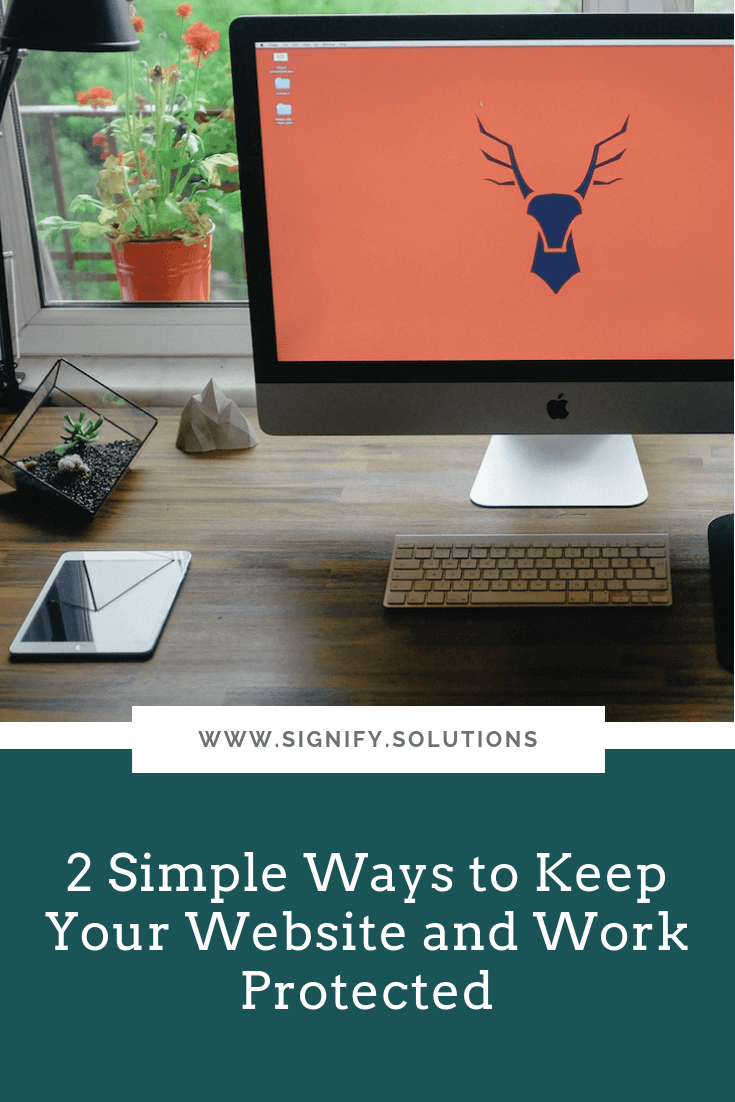I recently had the pleasure of sitting down with the leader of a nonprofit that I’d long admired. And while I loved hearing about their mission, their work, and their successes, it was one of their failures that stuck with me: a failed partnership.
To be completely frank, it wasn’t the nonprofit’s fault. It was the small business that tried to work with them. And it’s a story I’ve heard before from others. Sadly, it probably won’t be the last time either.
There are a lot of well-meaning people in small businesses with big hearts. And I’m deeply grateful and encouraged when I hear about for-profits partnering with nonprofits. It’s a wonderful thing, and honestly, it’s good for business.
However, if small businesses aren’t careful, they’ll do more harm than good because they’ll not only ruin the relationship, but pre-burn the bridge for others wanting to do the same in the future.
So, before you begin to think about building that partnership, let me give you the inside scoop on what a lot of nonprofits are looking for, and some pitfalls to avoid.
Mistake #1: Push Your Agenda Instead of Filling the Nonprofit’s Need
Let me just cut to the chase—this is often the culprit. In fact, it’s what happened in the example above.
While it is absolutely true that you should get something out of the relationship as well, you should approach the nonprofit with a genuine desire to serve. You need to try to understand their needs, and see where you can fill a gap.
Having an outside perspective is invaluable. It’s the reason I often get hired for projects as well. It’s a tremendous thing to step back and look at a situation or organization in an entirely new way for someone. So, that should not be overlooked.
However, if you reach out to a nonprofit with a list of things they “need,” but they don’t want any of them, this partnership is in trouble before it ever gets off the ground. And no amount of pushing what you have to offer on them is going to help.
You may be a videographer who sees the need for a new promo video on their website, but if they’d rather have someone film their annual gala, start there. Yes, there may be times when you can show them something they might not have otherwise seen, but a lot of broken partnerships are the result of a business telling a nonprofit what they need, the nonprofit accepting helping they don’t actually want, and no one being happy in the end.
Mistake #2: Leave the Details and Commitment Level Out of the Conversation
Everyone likes friends who constantly RSVP maybe and pop in and out of their lives at the most inconvenient moments?
That’s a big, fat no.
Spontaneity has it’s time and place for sure, and everyone loves surprises now and again, but leave them out of the nonprofit / small business partnership. Or, at least most of the time.
It can be a scary thing for a nonprofit to let someone new into their flow, especially those working on highly-sensitive issues. So, do them a favor and let them know how you plan to show up for them.
This doesn’t have to mean a huge commitment. Just be clear about what you can, and can’t do, and when you can, and can’t, do it. It’s that simple. Open lines of communication mean everything.
Your time is precious, but so is theirs. Take the time to outline exactly what this partnership will look like. That benefits you both.
Mistake #3: Don’t Follow-Through On Your Commitment
Can we just all agree that life happens? I know that, you know that, and so do the people you want to partner with.
It’s not always fun, and it’s not always easy, but sometimes circumstances change. If that happens, the best thing you can do is to communicate that to your nonprofit partner. Give an explanation, and notice (when possible), but don’t just disappear.
We have this crazy, new term we’ve all adopted over the past couple of years called “ghosting.” If you aren’t familiar with this concept, it’s pretty clear from the use of the word, but it’s when someone just vanishes from your life. Typically, this word is used in the date-osphere, but it applies here, too.
A leader at a social enterprise told me about someone who did this to them. This woman showed up out of the blue, promised them the moon, got consent from the organization, took what she wanted, and then was never seen or heard from again.
Ugh.
Can we all also agree how gross this is? Please, under any circumstances, do not do this to anyone—ever—but especially my friends at nonprofits. It’s a small world, so burning one bridge may just cause a wildfire you can’t put out. Plus, it’s just insanely rude and causes me like me to write posts like this.
Be honest and be respectful. You’ll probably get the same in return.
Mistake #4: Keep Your Nonprofit Partnership a Secret
Okay, I get that this statement may be kinda strange to include here, but I’m a marketer, so it’ll makes sense in a moment.
Hopefully, you don’t want to partner with a nonprofit solely for the publicity, but no one’s going to deny that it’s not a benefit. As I mentioned before, it’s also good for business.
However, I also get it can feel weird or braggy to talk about it. But that’s good. It means you care! So, show it off, but in a way that feels right for you. (PS: I can help you figure that out! :)
My guess is that you’re partnering with the nonprofit because you are excited about their work, so talk about that. Guess what? The nonprofit would love that, too!
I was just reading in Philanthropy News Digest that companies give the least amount to charitable causes each year, when compared to individuals and foundations. They said, “And last comes corporations — a surprise to many observers, who, given the dominant position of the private sector in the U.S. economy, no doubt assume that businesses play a far greater role in philanthropy.”
Given the potential for philanthropy, I would love to help change that fact. And one way I think we can do that is by helping those who are giving to talk about it more. People like me and the media can highlight giving and partnerships more, but it’s also up to you to talk about it. Encourage your peers (and competition) to give, and watch the goodness spread.
Yes, this should be done in a way that both parties feel good about, but the point is—it should be done. Say it loud and proud, my friend! Giving back is the new black!
Mistake #5: Move Forward, Even Though You Got Bad Vibes
I’m not an overly “woo woo” kind of person, but I do absolutely believe in intuition. And I had a client that I ultimately had to let go of because I didn’t listen to my Spidey sense during our initial meeting.
Yes, I want you to partner with a nonprofit, but does that mean you have to partner with the first one you come across? Nope. You’ve got over 1.5 million to choose from here in the US alone, so you can be a little picky, if needed.
My former client was perfect on paper. Ideal, as we marketers say. I was really excited to sit down and have coffee with him. But in a few minutes time, I should’ve known better. We weren’t communicating well, and I felt like I was just repeating myself. He also just seemed more interested in hearing himself talk more than hearing what I had to say. But I made excuse after excuse in my head as to why I felt that way, and moved forward anyway. It was for a small project and wouldn’t eat up much of my time—or so I thought.
Ever been there?
This “little” client ended up being a lot more than I bargained for. He asked for favors and discounts, had me repeat the same conversations over again, and contacted me on weekends and evenings unnecessarily. So, after about a month or so, I had to tell him I was not going to be the right fit for him. It was a hard lesson to learn, and many of you probably know what I’m talking about.
So, while partnering with a nonprofit is a wonderful thing, make sure it’s the right fit. If you get a bad vibe, it’s time to exit stage right.
Mistake #6: Start with Large Projects and Little Details
If by now, you haven’t started to see that partnering with a nonprofit is somewhat like dating them, let me clue you in here. Many of the same principles apply!
Build your partnership like you would build any relationship. Start small, and with a conversation.
This partnership should be mutually-beneficial and clearly communicated. That’s what is best for both of you, and it will help ensure success, even if it’s only a short-term project.
Nonprofits are often in desperate need of additional support, whether it’s financial or through something like volunteering. So, in that case, they may feel the need to jump in with you and take anything you offer. But that doesn’t always mean that’s what should happen.
Be sure to have a couple of conversations before starting any work to make sure you’re both on the same page. And, even then, try a small project to start. Once you leap into the trenches together, you’ll be able to see if this partnership is what both of you wants.
If not, say thanks and try again with another organization. If so, you’ll have the time of your life making positive change on behalf of a worthy cause. It could be just the thing your business—and life—was missing.
What questions do you have about partnering with nonprofits?
Nonprofits, next week I’ll talk about how you can be a better partner for small businesses, so stay tuned!
PIN THIS POST FOR LATER:
I'm Kristi Porter, and I started Signify to provide writing and consulting services to nonprofits and for-profit organizations with a social mission, primarily through copywriting, marketing, and business communications. I also teach solopreneurs and small businesses how to incorporate philanthropy and giving strategies. I believe that cause-focused organizations are the future of business. You're proof that companies can both make money and do good. And I'm here to help you get noticed and grow. When you succeed, we all win.



































